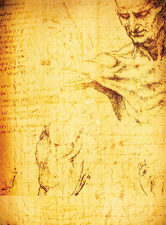Visual programming languages
Da Vinci Code

© Lead Image © Janaka Dharmasena, 123RF.com
Developers working with graphical programming languages point and click to build software from prefabricated modules. We look at five free visual programming development environments.
With graphical development environments, programmers simply use a mouse to draw a flowchart; then, the development environment translates it into a finished application. Developers do not need to learn cryptic commands, and they neither produce syntax errors nor suffer buffer overflows. Ideally, the development environment will even step through the program, visually emphasizing the currently active component and dramatically facilitating the troubleshooting process.
The first graphical development environments emerged in the 1960s, but only GUI editors or Rapid Development (RAD) tools are in common use. Developers use them to click together user interfaces for their applications (e.g., Glade [1] and Qt Designer [2]); however, in reality, only laboriously typed chunks of code bring the GUI elements to life. Design tools are similarly restricted, especially tools for Unified Modeling Language [3]. Again, they generate a code framework that the programmer fills with content at the keyboard.
If you look hard, you will find a surprisingly large number of visual programming languages (VPLs), for which their inventors usually include a suitable development environment. Often, the development environment is designed with a specific field of application in mind.
[...]
Buy this article as PDF
(incl. VAT)
Buy Linux Magazine
Subscribe to our Linux Newsletters
Find Linux and Open Source Jobs
Subscribe to our ADMIN Newsletters
Support Our Work
Linux Magazine content is made possible with support from readers like you. Please consider contributing when you’ve found an article to be beneficial.

News
-
Parrot OS Switches to KDE Plasma Desktop
Yet another distro is making the move to the KDE Plasma desktop.
-
TUXEDO Announces Gemini 17
TUXEDO Computers has released the fourth generation of its Gemini laptop with plenty of updates.
-
Two New Distros Adopt Enlightenment
MX Moksha and AV Linux 25 join ranks with Bodhi Linux and embrace the Enlightenment desktop.
-
Solus Linux 4.8 Removes Python 2
Solus Linux 4.8 has been released with the latest Linux kernel, updated desktops, and a key removal.
-
Zorin OS 18 Hits over a Million Downloads
If you doubt Linux isn't gaining popularity, you only have to look at Zorin OS's download numbers.
-
TUXEDO Computers Scraps Snapdragon X1E-Based Laptop
Due to issues with a Snapdragon CPU, TUXEDO Computers has cancelled its plans to release a laptop based on this elite hardware.
-
Debian Unleashes Debian Libre Live
Debian Libre Live keeps your machine free of proprietary software.
-
Valve Announces Pending Release of Steam Machine
Shout it to the heavens: Steam Machine, powered by Linux, is set to arrive in 2026.
-
Happy Birthday, ADMIN Magazine!
ADMIN is celebrating its 15th anniversary with issue #90.
-
Another Linux Malware Discovered
Russian hackers use Hyper-V to hide malware within Linux virtual machines.

